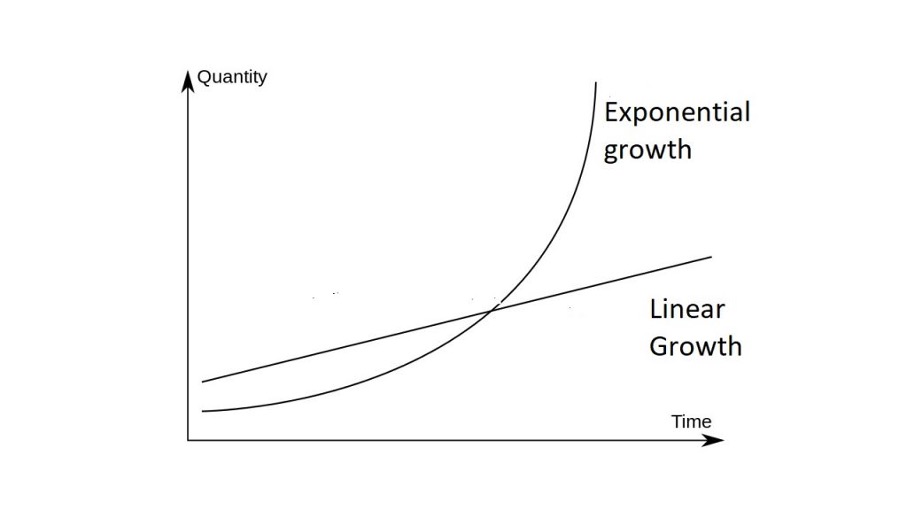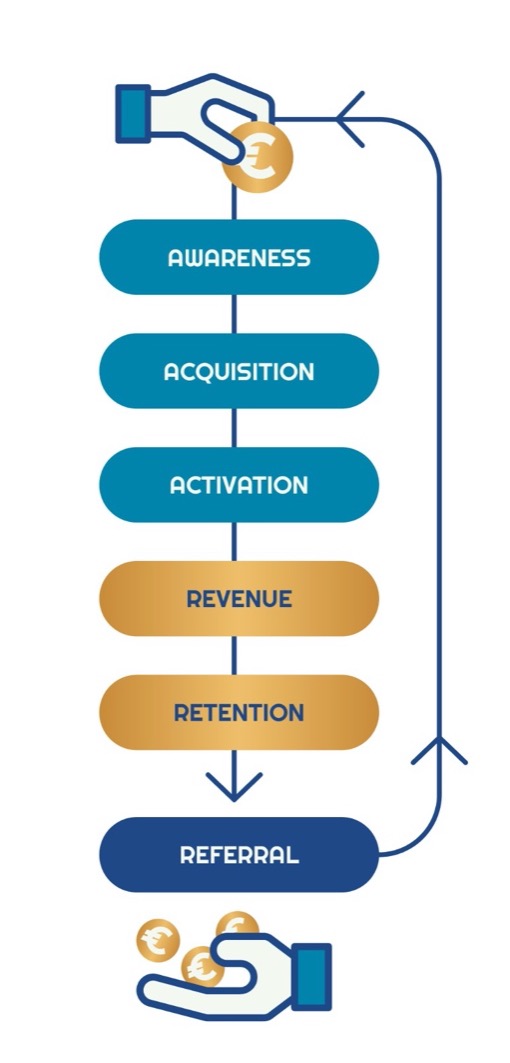If you currently have a good business idea, are writing a business plan (stop doing this) or maybe already in the process of founding your startup, it is very important to already think about how you will grow your startup. Business growth has different phases and therefore different methods to measure and ensure growth. This blog focuses on startups in the early stages. As I described in a previous blog, we distinguish 4 types of startups. Probably the Hobbyist and Consultant will grow linearly at best and the Dreamer and Money Maker exponentially. In most cases, entrepreneurs will want to work towards exponential growth.

This means (within this context); growing as fast and hard as possible, with as little effort (hours, money, personnel or resources) as possible. But what exactly is growth? The concept of growth goes hand in hand with; data, knowledge and insight. Growth is measuring KPIs to convert this data into knowledge and to convert this knowledge into insight and to use this insight to continue to predict and realize growth. Many startups think that when talking about growing their startup, it is only about growing in revenue. But for this revenue, you must first grow in reach, visitors, interaction and only eventually in revenue.
The growth machine
The goal is to build a growth machine that will make your startup grow exponentially.
To do this, I recommend getting started with Dave McClure’s Pirate Metrics model. Dave described the most important metrics within the customer journey of a startup with; AAARRR (like an old pirate shouts). AAARRR stands for;

Awareness (How many people do you reach?)
Acquisition (How many people are interested?)
Activation (How many people take the first important step?)
Revenue (How many people become paying customers?)
Retention (How many people come back for more purchases)
Referral (How many people refer friends to your startup?)
The goal is to eventually be able to predict very accurately how much effort (time, money, people or resources) you need to realize paying and returning customers.
Data is knowledge, knowledge is insight
If you have mapped the above data, you can gain insight into your growth potential. This is a continuous process, because you must make a distinction between the prediction and the actual results achieved.
If the expectation of week 1 turns out to be less good (or better) than you had thought, you can adjust the expectation of week 2, this way you are making data-driven predictions. This helps you to set and achieve realistic goals. In addition, you can use these figures as input for your financial forecast, I’ll tell you more about this in a following blog.
The Customer Journey
This is the journey your (final) customer makes, from first encounter (Awareness) to recommending your product or service (Referral).
If you, thanks to your pirate metrics, have gained insight in the conversion ratios (i.e. how many potential customers in percentage terms flow through in your entire process to paying and referring customers) you can check if this runs smoothly and exponentially. For example, if you notice that your periodic number of visitors and interactions is increasing but the number of purchases/users is not, you may wonder if something is going wrong in this process.
Ideally, you would like to see your sales increase the most. But make no mistake, maybe the Referral ratio is the most important thing in the long run. These customers have become ambassadors for your brand and are advertising for you for free. This “feeds” your machine from bottom to top. This contributes greatly to exponential growth. So make sure you make it interesting for everyone who becomes a customer to promote your product or service.
When to start growing?
Starting to predict and monitor your growth is possible from the moment you only have a business idea. Write a blog or post on social media (Awareness) and provide it with a call to action (Acquisition). For example: mail me, go to my website or leave your details.
Perhaps you already have a website, product or service and you are already generating sales. Make sure you analyze this periodically and start predicting and setting goals, so you ensure growth. If you are currently only looking back at your analytics, you are monitoring your growth. If you set accurate goals based on the results achieved, you are achieving growth. Challenge yourself!
Application
You can make a file in Excel for yourself and use your existing data to gain insight in your KPI’s. Decide what you are going to measure (based on the pirate metrics), how you are going to measure it and over which period. If you don’t have any data yet you can make a forecast. This prediction helps you to determine and realize your goals.
In case you are not that handy with Excel, we have built a startup plan template in the LaunchPlatform. You only have to fill in your data or forecast, the rest goes automatically.


In case you want to learn more about the topic of growth and all the other criteria that startup investors think are most important? Then you can create a free Explorer account and watch our Masterclasses.
If you not only want to learn, but also apply these kind of models in our startup plan template (like the example above) and write your startup plan together with experts, then you can consider the Founder account.
Which tools and tricks you can use to map this out for yourself you will learn in a next blog and in one of our videos within the LaunchPlatform.
Summary
Make sure you periodically start collecting and predicting the right data of your startup. You will use this data continuously to get and secure your goals accurate, this is how you build your growth machine.
I hope you’ve learned something from this blog, see you soon! If you think this is a valuable blog, please like my LinkedIn post or leave a comment, so other startups get to know it as well.



